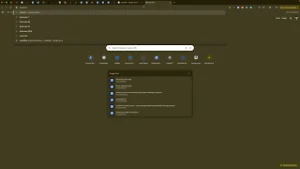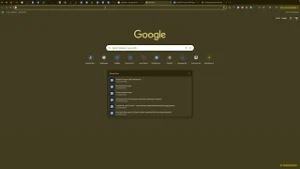Establishing a strong online presence starts with a well-configured website. One of the first steps in personalizing your WordPress site involves customizing essential elements like the site title, tagline, and favicon. These elements not only define your brand identity but also enhance user experience and improve your website’s professionalism. This comprehensive guide will walk you through the process of changing your site title, tagline, and favicon on a WordPress website, ensuring your site accurately reflects your brand and stands out to visitors.
Why Customize Your Site Title, Tagline, and Favicon?
Customizing these elements is crucial for several reasons:
Benefits of Customization
- Brand Identity: Your site title and tagline communicate your brand’s mission and values.
- Professional Appearance: A unique favicon adds a professional touch and helps your site stand out in browser tabs.
- SEO Advantages: Relevant site titles and taglines can improve your website’s search engine optimization (SEO), making it easier for potential customers to find you.
- User Experience: Clear and consistent branding enhances user trust and engagement.
Step-by-Step Guide to Changing Site Title, Tagline, and Favicon
Follow these detailed steps to customize your WordPress website’s title, tagline, and favicon using the WordPress dashboard.
Step 1: Access Your WordPress Dashboard
- Log In to WordPress:
- Open your web browser and navigate to
yourwebsite.com/wp-admin.Enter your username and password, then click Log In to access your dashboard.
- Open your web browser and navigate to
Step 2: Navigate to General Settings
- Go to Settings:
- In the left-hand sidebar of your WordPress dashboard, hover over Settings and click on General.
Step 3: Change Site Title and Tagline
- Edit Site Title:
- In the General Settings page, locate the Site Title field.
- Enter your desired site title. This title appears in the header of your site and is often used by search engines.
- Edit Tagline:
- Below the site title, find the Tagline field.Enter a brief tagline that describes your website or business. The tagline typically appears below the site title and is used by search engines in snippets.
Step 4: Change the Favicon (Site Icon)
- Access Site Icon Settings:
- Scroll down to the Site Icon section within the General Settings page.
- The site icon appears in the browser tab, bookmark bar, and other places where your site is referenced.
- Upload a New Site Icon:
- Click on Select Site Icon.Upload an image that represents your brand. The recommended size is 512×512 pixels.Crop the image as needed and click Publish to set it as your new favicon.
- Confirm the Change:
- Once uploaded, your new favicon will be displayed in your browser tab. It may take some time to update across all browsers.
Step 5: Update the Administrator Email Address
- Edit Administrator Email:
- In the General Settings page, locate the Administration Email Address field.Enter the email address you want to use for administrative purposes. This email receives important notifications from WordPress.
- Save Changes:
- Scroll down and click Save Changes to apply the new email address.
Step 6: Set the Correct Time Zone and Date Format
- Select Time Zone:
- In the General Settings page, find the Time Zone dropdown menu.
- Select your appropriate time zone to ensure that all time-related data on your website is accurate.
- Customize Date Format:
- Below the time zone, locate the Date Format section.Choose a date format that suits your preference or enter a custom format. This setting affects how dates are displayed on your site.
- Save Changes:
- After making adjustments, click Save Changes to update your settings.
Step 7: Verify Your Changes
- Check Your Site:
- Visit your website to ensure that the site title, tagline, and favicon reflect the changes you made.Clear your browser cache if you don’t see the updates immediately.
- Test Email Notifications:
- If you changed the administrator email, ensure that you receive notifications correctly by performing a test action, such as submitting a form.
Best Practices for Customizing Site Title, Tagline, and Favicon
Implementing best practices ensures that your customizations are effective and contribute positively to your website’s performance and user experience.
1. Maintain Consistency with Your Brand
- Use Brand Colors and Fonts: Ensure that your site title, tagline, and favicon align with your brand’s color scheme and typography.
- Clear Messaging: Your tagline should succinctly communicate what your business does or its core values.
2. Optimize for SEO
- Relevant Keywords: Incorporate relevant keywords into your site title and tagline to improve search engine rankings.
- Avoid Keyword Stuffing: Keep your site title and tagline natural and easy to read without overloading with keywords.
3. Choose a Memorable Favicon
- Simplicity: Opt for a simple and recognizable design that scales well at smaller sizes.
- Distinctiveness: Ensure your favicon stands out and is easily distinguishable from others in browser tabs.
4. Keep Information Up-to-Date
- Regular Updates: Periodically review and update your site title, tagline, and favicon to reflect any changes in your business or branding strategy.
- Accurate Time Settings: Ensure your time zone and date format are always accurate to avoid discrepancies in scheduling and content publishing.
Common Mistakes to Avoid
Avoiding these common pitfalls can help you maintain an effective and professional website.
1. Not Saving Changes
- Issue: Forgetting to click Save Changes after making adjustments means your updates won’t take effect.
- Solution: Always double-check that you’ve saved your changes before exiting the settings page.
2. Using Low-Quality Images for Favicon
- Issue: Blurry or pixelated favicons can detract from your site’s professionalism.
- Solution: Use high-resolution images (512×512 pixels recommended) and ensure they are clear and recognizable when scaled down.
3. Overcomplicating the Tagline
- Issue: A lengthy or unclear tagline can confuse visitors and dilute your message.
- Solution: Keep your tagline concise, clear, and focused on your core message or value proposition.
4. Ignoring SEO Best Practices
- Issue: Neglecting SEO can hinder your website’s visibility in search engine results.
- Solution: Incorporate relevant keywords naturally into your site title and tagline, and avoid overusing keywords to prevent penalties.
5. Mismatched Branding Elements
- Issue: Inconsistent colors, fonts, or styles can weaken your brand identity.
- Solution: Ensure that all branding elements, including site title, tagline, and favicon, are harmonized with your overall brand guidelines.
Frequently Asked Questions
Can I Change My Site Title and Tagline Anytime?
Yes, you can update your site title and tagline as often as needed through the Settings > General section in your WordPress dashboard. Regular updates can reflect changes in your business focus or branding strategy.
What Should I Use for My Tagline?
Your tagline should succinctly describe your business’s purpose, mission, or unique selling proposition. It should be clear, memorable, and aligned with your brand identity. For example, “Quality Home Restoration Services” or “Innovative Solutions for Modern Problems.”
How Do I Create an Effective Favicon?
To create an effective favicon:
- Size: Use a 512×512 pixel image to ensure quality when scaled down.
- Format: Save your favicon in a compatible format like PNG or ICO.
- Design: Keep it simple and recognizable, focusing on your logo or a distinct element of your brand.
- Consistency: Ensure it matches the overall aesthetic and color scheme of your website.
Why Isn’t My Favicon Updating?
- Caching Issues: Browsers often cache favicons, causing delays in updates.
- Solution: Clear your browser cache or use a different browser to view the updated favicon. It may also take some time to propagate across all browsers.
Do Site Title and Tagline Affect SEO?
Yes, both the site title and tagline play roles in SEO:
- Site Title: Appears in search engine results and browser tabs, influencing click-through rates.
- Tagline: Provides additional context about your site’s content, helping search engines understand your site’s purpose.
How Do I Ensure My Site Title is SEO-Friendly?
- Include Relevant Keywords: Incorporate primary keywords related to your business.
- Keep It Concise: Limit the title to around 60 characters to prevent it from being cut off in search results.
- Avoid Keyword Stuffing: Use keywords naturally without overloading the title.
Conclusion
Customizing your WordPress website’s site title, tagline, and favicon is a simple yet impactful way to enhance your brand’s online presence and professionalism. By following this step-by-step guide, you can ensure that these elements accurately reflect your brand identity, improve your website’s SEO, and provide a better user experience for your visitors. Remember to maintain consistency, adhere to SEO best practices, and regularly update these settings to keep your website fresh and relevant.
Embrace the power of personalized branding elements to make your WordPress website stand out and effectively communicate your business’s values and offerings to your audience.



